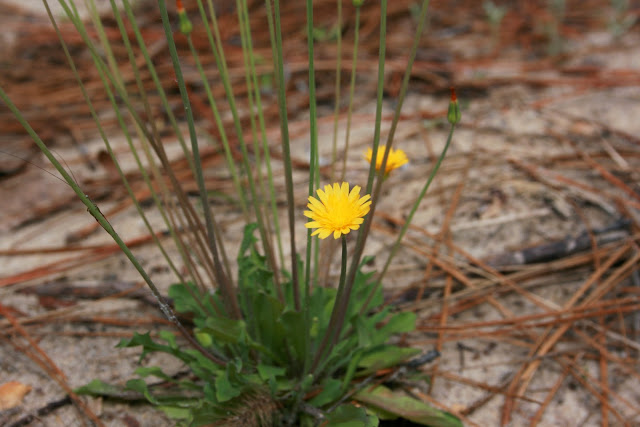Sandweed (Hypericum fasciculatum) is yet another evergreen wetland St. John's-wort found statewide and limited to the states of the Deep South. I have compared it previously with coastalplain St. John's-wort (H. brachyphyllum) as the two share some of the same characteristics; namely flowers with 5 petals and needle-like leaves. Compare the foliage of the two and it is not difficult to see the differences. While coastalplain St. John's-wort has leaves that fold backward, sandweed has flat leaves with no apparent fold.
The other obvious difference lies with its growth form. Sandweed reaches a mature height of about 5 feet. The bark is reddish and often peels back; somewhat like that of the gumbo limbo tree. In sites that remain flooded for long periods, sandweed also forms adventitious roots; somewhat like the prop roots of a red mangrove, but thin and wiry. Mature sandweed forms an attractive, but somewhat irregular shrub.
Flowering can occur from late spring through fall. Each flower is no larger than 1/3 inch across, but large numbers can be present at any one time.
Sandweed is sometimes available commercially, but is grown mostly for wetland restoration projects. It is particular to hydrology and requires seasonably wet soils, but water depths no greater than about 6 inches. I have grown this species successfully in my wetland garden at Hawthorn Hill, but have not found it to be especially long-lived. It also has not spread by seed like many of my other St. John's-worts; seemingly because something was "missing" in its planting location.
If you have the right conditions, sandweed makes an extremely attractive addition to a pond edge. Use it in the middle of the planting in areas that occassionally flood to depths of 6 inches or less.










